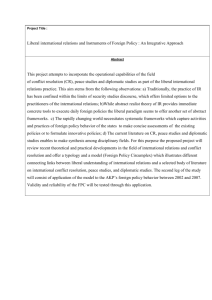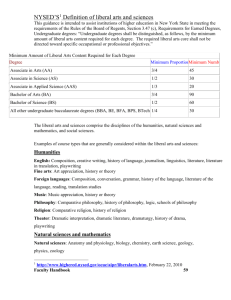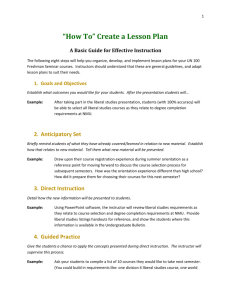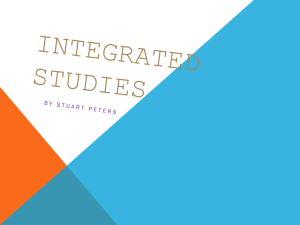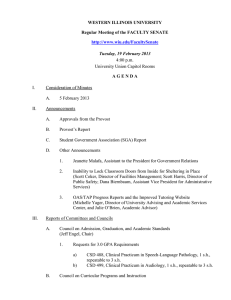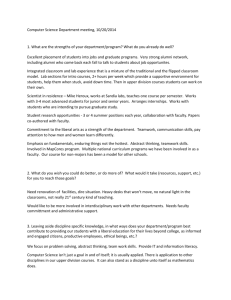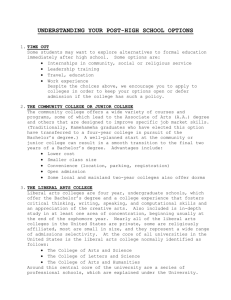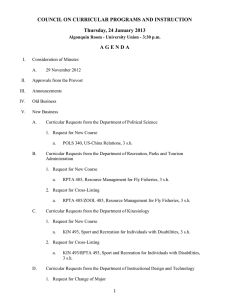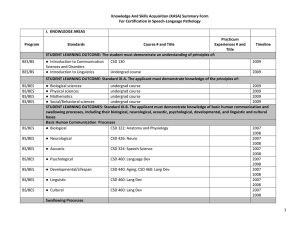CSD Vignette - Nazareth
advertisement
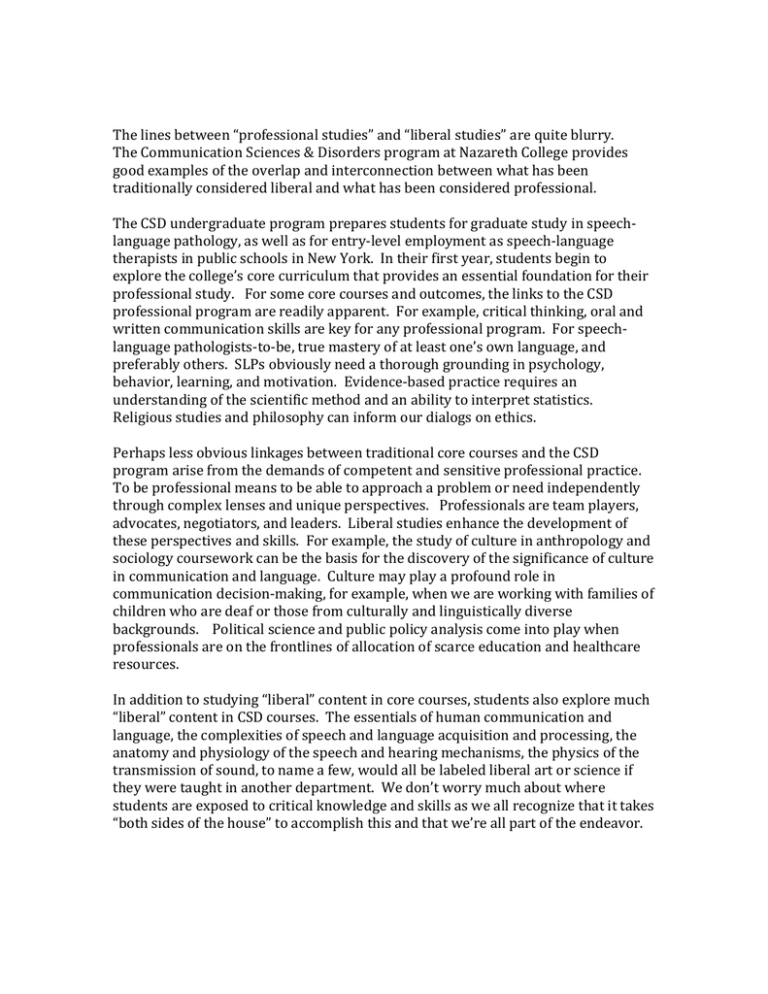
The lines between “professional studies” and “liberal studies” are quite blurry. The Communication Sciences & Disorders program at Nazareth College provides good examples of the overlap and interconnection between what has been traditionally considered liberal and what has been considered professional. The CSD undergraduate program prepares students for graduate study in speechlanguage pathology, as well as for entry-level employment as speech-language therapists in public schools in New York. In their first year, students begin to explore the college’s core curriculum that provides an essential foundation for their professional study. For some core courses and outcomes, the links to the CSD professional program are readily apparent. For example, critical thinking, oral and written communication skills are key for any professional program. For speechlanguage pathologists-to-be, true mastery of at least one’s own language, and preferably others. SLPs obviously need a thorough grounding in psychology, behavior, learning, and motivation. Evidence-based practice requires an understanding of the scientific method and an ability to interpret statistics. Religious studies and philosophy can inform our dialogs on ethics. Perhaps less obvious linkages between traditional core courses and the CSD program arise from the demands of competent and sensitive professional practice. To be professional means to be able to approach a problem or need independently through complex lenses and unique perspectives. Professionals are team players, advocates, negotiators, and leaders. Liberal studies enhance the development of these perspectives and skills. For example, the study of culture in anthropology and sociology coursework can be the basis for the discovery of the significance of culture in communication and language. Culture may play a profound role in communication decision-making, for example, when we are working with families of children who are deaf or those from culturally and linguistically diverse backgrounds. Political science and public policy analysis come into play when professionals are on the frontlines of allocation of scarce education and healthcare resources. In addition to studying “liberal” content in core courses, students also explore much “liberal” content in CSD courses. The essentials of human communication and language, the complexities of speech and language acquisition and processing, the anatomy and physiology of the speech and hearing mechanisms, the physics of the transmission of sound, to name a few, would all be labeled liberal art or science if they were taught in another department. We don’t worry much about where students are exposed to critical knowledge and skills as we all recognize that it takes “both sides of the house” to accomplish this and that we’re all part of the endeavor. Later stages of the CSD undergraduate program involve further integration and application. Following foundational coursework, students spend significant time in learning about communication disorders, assessment, and remediation. As juniors and seniors, students do two semesters of clinical practicum in our on-campus speech, language, and hearing clinic, as well as a third clinical experience in a school setting. This real-world experience requires students to use all the knowledge and skills they’ve acquired through all components of their education, and provides many opportunities for reflection and tying together all that they’ve done before. CSD students also participate in service learning as part of a senior seminar that is a capstone integration of their liberal and professional studies. This seminar involves some traditional work with case studies in communication disorders, but also inquiry into current issues in the field, such as a recent look at bullying and children with communication disorders, for example. The course’s strong service learning component is an organic outgrowth of both liberal and professional studies where students work as teams with community organization. Students collaborate to understand the organizations’ needs and to develop and implement solutions. All projects include a significant reflection component where students analyze the knowledge and skills they brought to the project, and what they took away with them. Recent examples: Mary’s Place refugee outreach center and Hickok Center for Brain Injury. MORE.

